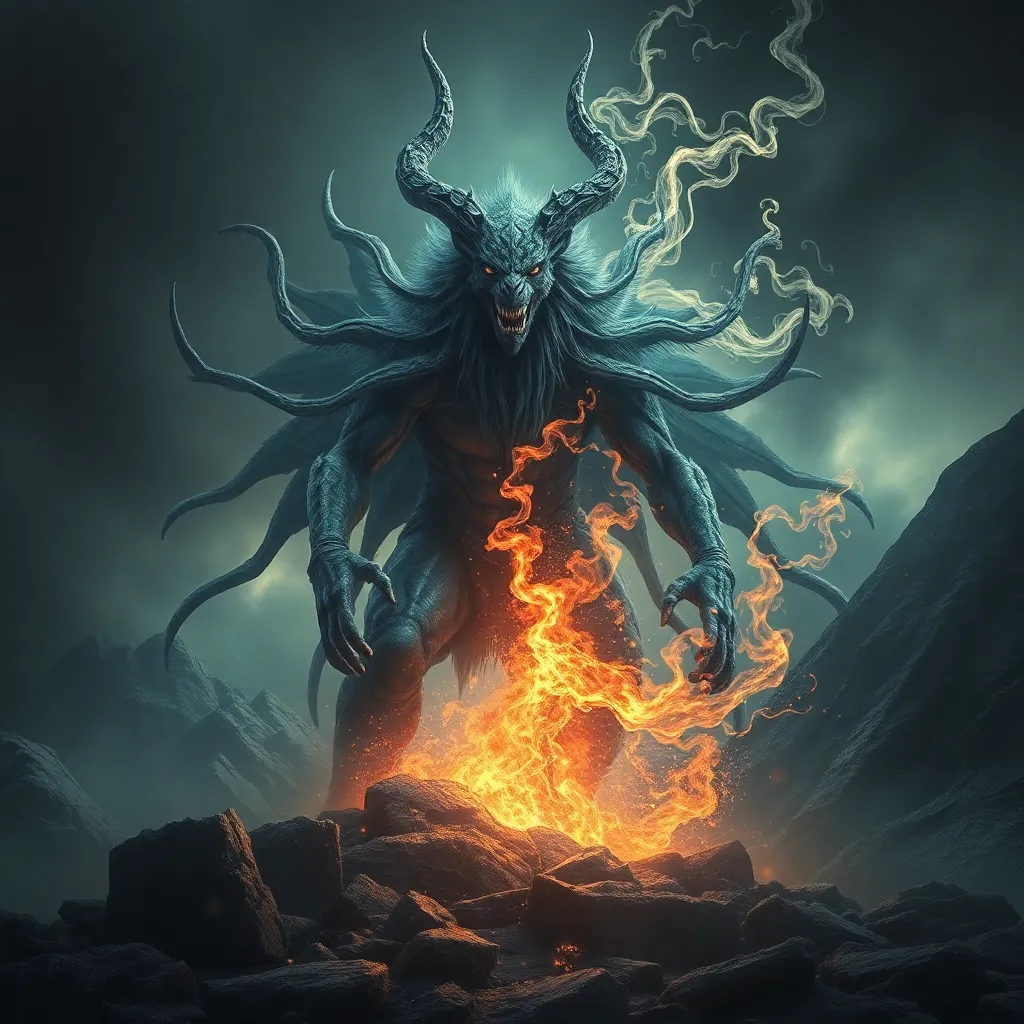Fafnir and the Power of Transformation: A Psychological Perspective
I. Introduction
Fafnir is a central figure in Norse mythology, known for his dramatic transformation from a dwarf into a fearsome dragon. This metamorphosis is not merely a physical change but a profound representation of psychological themes that resonate deeply with human experience. Transformation in mythology often serves as a mirror reflecting the complexities of human nature, particularly our struggles with greed, fear, and identity.
The purpose of this article is to explore the psychological implications of Fafnir’s transformation, examining how his story can illuminate aspects of our own psychological journeys and the universal themes of change and personal growth.
II. The Myth of Fafnir: A Brief Summary
To understand Fafnir’s transformation, it is essential to delve into his origins. Fafnir was originally a dwarf, part of a family that possessed a vast treasure hoard. The allure of this wealth led to a curse that ultimately prompted Fafnir to kill his father, Hreidmar, and claim the gold for himself. This act of greed set in motion a series of events that would lead to his transformation into a dragon.
As Fafnir transformed into a dragon, he became a symbol of greed and the corrupting power of wealth. His insatiable desire for gold isolated him from others, turning him into a creature of terror rather than a being of community and kinship. This transformation serves as a powerful metaphor for the consequences of unchecked ambition and the isolation that can arise from a singular focus on material gain.
III. Psychological Theories of Transformation
Psychologically, transformation is a multifaceted concept that encompasses personal growth, identity changes, and the integration of different aspects of the self. One of the most influential frameworks for understanding transformation is Carl Jung’s theory of archetypes, particularly the notion of the “shadow self.” This shadow represents the parts of ourselves that we reject or ignore, often manifesting in destructive ways.
Myths like that of Fafnir provide valuable insights into human psychology by illustrating the internal conflicts we face. They offer narratives that help us make sense of our fears, desires, and the transformative processes we undergo throughout life.
IV. Fafnir as a Symbol of Greed and Isolation
Before his transformation, Fafnir was part of a family, but his greed led to his isolation. As he hoarded the cursed gold, he became increasingly distanced from his loved ones and humanity at large. This shift highlights the psychological effects of isolation on identity and behavior.
- Identity Transformation: Fafnir’s identity shifted from a member of a community to a solitary dragon, illustrating how greed can strip away connections and redefine who we are.
- Behavioral Changes: His transformation influenced his behavior, as he became more aggressive and fearful, embodying the primal instincts of a predator.
The consequences of greed on mental health are profound. Fafnir’s story serves as a cautionary tale about how the pursuit of wealth can lead to a loss of self and the deterioration of relationships, ultimately resulting in profound loneliness and despair.
V. The Role of Fear in Transformation
Fear plays a significant role in Fafnir’s metamorphosis. Initially, his greed may have been driven by a fear of losing power or status, which catalyzed his transformation into a dragon. This fear transformed him into a creature of might, but it also trapped him in a cycle of destruction.
From a psychological perspective, fear can be both a catalyst for change and a barrier to it. It can push individuals to make drastic changes in their lives, but it can also lead to avoidance and further entrenchment in negative behaviors.
- Protective Nature of Fear: Fear can motivate individuals to protect themselves from perceived threats.
- Destructive Consequences: Conversely, it can lead to irrational behavior and isolation, as seen in Fafnir’s case.
VI. The Hero’s Journey: Confronting Fafnir
The encounter between Fafnir and the hero Siegfried represents a pivotal moment of confrontation. Siegfried’s quest to slay the dragon embodies the psychological journey of facing one’s fears and overcoming personal challenges. This confrontation is not only physical but deeply symbolic, as it illustrates the necessity of addressing our internal demons.
Psychologically, facing fears can lead to profound transformation and healing. The act of confronting what we fear allows for growth, resolution, and the potential for a new identity that is not defined by past traumas or destructive behaviors.
VII. Lessons from Fafnir’s Transformation
Fafnir’s journey offers valuable lessons about self-awareness and the potential for personal growth through adversity. His story reminds us of the importance of reflecting on our motivations and the impact of our choices.
- Self-Awareness: Understanding the motivations behind our actions can lead to healthier choices and relationships.
- Growth Through Adversity: Adversity can be a powerful teacher, offering opportunities for growth that may not arise in comfort.
- Modern Psychological Practices: Fafnir’s tale can inform contemporary therapeutic practices, emphasizing the need to confront fears and understand the self.
VIII. Conclusion
In summary, Fafnir’s story is one of transformation, illustrating the psychological significance of change in human experience. From his origins as a dwarf to his tragic metamorphosis into a dragon, Fafnir embodies the complexities of greed, fear, and isolation.
The enduring relevance of transformation in our lives is a reminder that change, while often daunting, can lead to profound personal growth and self-discovery. By embracing change and confronting our internal struggles, we can navigate our psychological landscapes toward a more integrated self.



